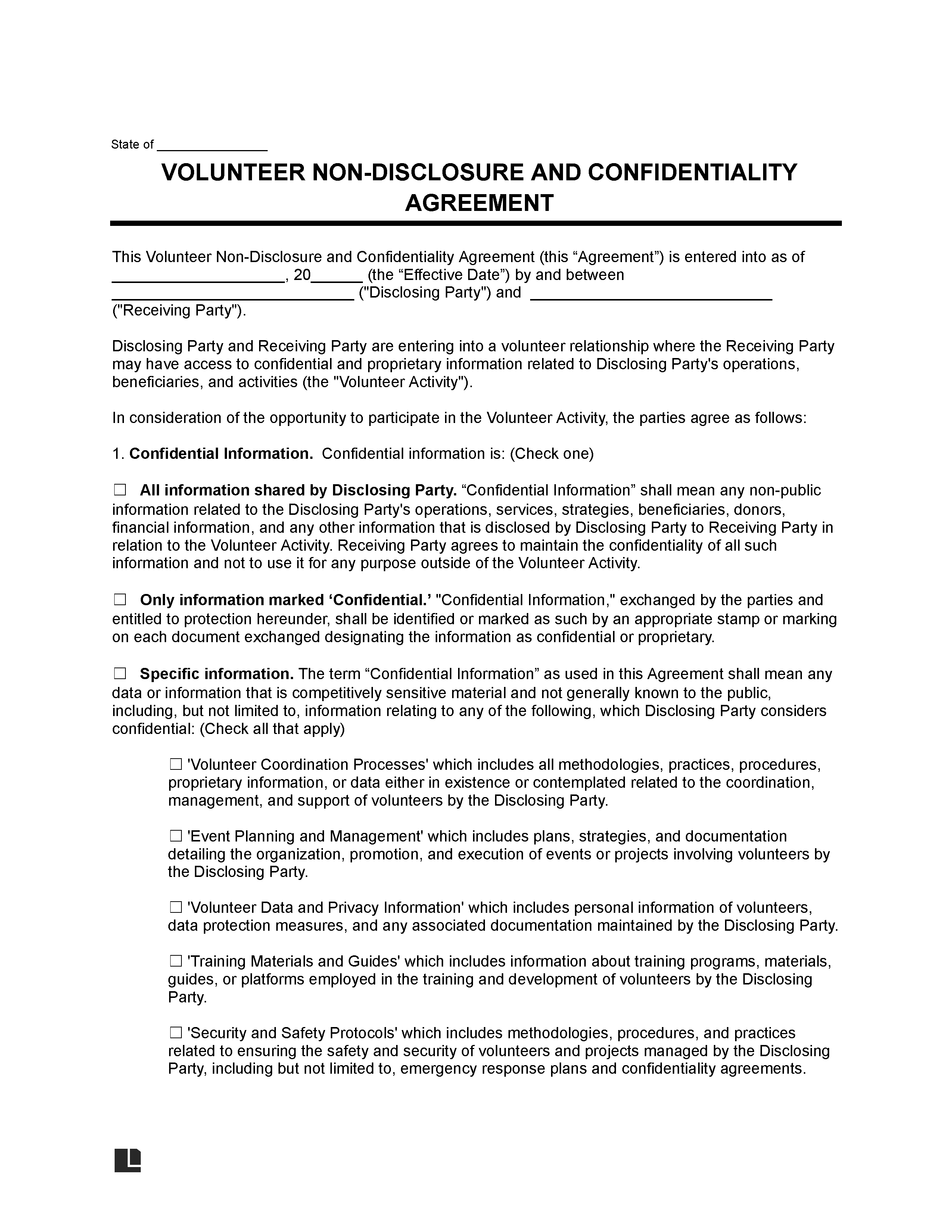A volunteer non-disclosure agreement prevents volunteers from divulging sensitive company information they learn when serving an organization. It defines the specific information they cannot share with unauthorized parties.
The agreement also contains the volunteer’s name, the disclosing party’s information, and the period it is valid for.
What Is a Volunteer?
Volunteers offer their time to assist at an event or hold a specific position within an organization without any financial compensation, making them unlike employees. They use their efforts, skills, and time to contribute to causes about which they’re passionate.
Purpose of a Volunteer NDA
Individuals may encounter confidential or proprietary information while volunteering with a company. They may need this information to perform their expected tasks so that an organization may release it to them directly.
Alternatively, volunteers may inadvertently encounter sensitive information while completing tasks or holding certain positions within a company. In case a volunteer comes across sensitive information that could be harmful in the hands of a competitor, a company may ask a volunteer to sign a non-disclosure agreement.
How to Write a Volunteer Non-Disclosure Agreement
Create an NDA with ease by following these steps:
Step 1 – Download a template in PDF or Word format.
Step 2 – Write the date the agreement will go into effect. For example, it may start the same day an individual begins a volunteer program. Also, please list the names of the disclosing and receiving parties and specify whether they’re each an individual, corporation, LLC, or another entity type.
Step 3 – Define the confidential information you don’t want the volunteer to share with external parties. This information may relate to the organization’s accounting information, business operations, customer information, intellectual property, or marketing and sales information.
Step 4 – Explain the length of the obligation so the receiving party knows for how long they must maintain the confidentiality of specific information.
Step 5 – Include non-compete and non-solicitation clauses if you’d like. If you don’t want to include these clauses, you can cross them out on your template.
Step 6 – Specify how this notice will be delivered to each party. Provide each party’s name, representative name, address, phone number, and fax number.
Step 7 – Add the date this document will terminate. It may be after a certain number of months or years, or you may terminate it after a volunteer has completed their service.
Step 8 – Include the state that will govern this document in case legal issues arise.
Step 9 – Have both parties sign the document. If either party has a representative, have this individual sign on their behalf.
Frequently Asked Questions
What Are the Ethical Standards for Volunteers?
Volunteers often have high moral and ethical standards because they offer their time to help people in need or support a cause they believe in. They often protect the confidence and welfare of the people they’re helping by maintaining the confidentiality of their information.
How Do I Hold Volunteers Accountable for Their Tasks?
You can hold volunteers accountable for their tasks by establishing clear expectations, participating in tasks when possible, and offering support/guidance if they encounter obstacles.
You can have them sign a volunteer NDA if you want to hold them accountable for protecting the organization’s private information.
Can I Discipline a Volunteer?
Even though a volunteer works for free, you can still discipline them. If they’re consistently late for their shifts or aren’t acting according to the organization’s standards, their presence can negatively affect a team’s morale and productivity.
So, disciplining a volunteer may be beneficial to the organization’s well-being.


